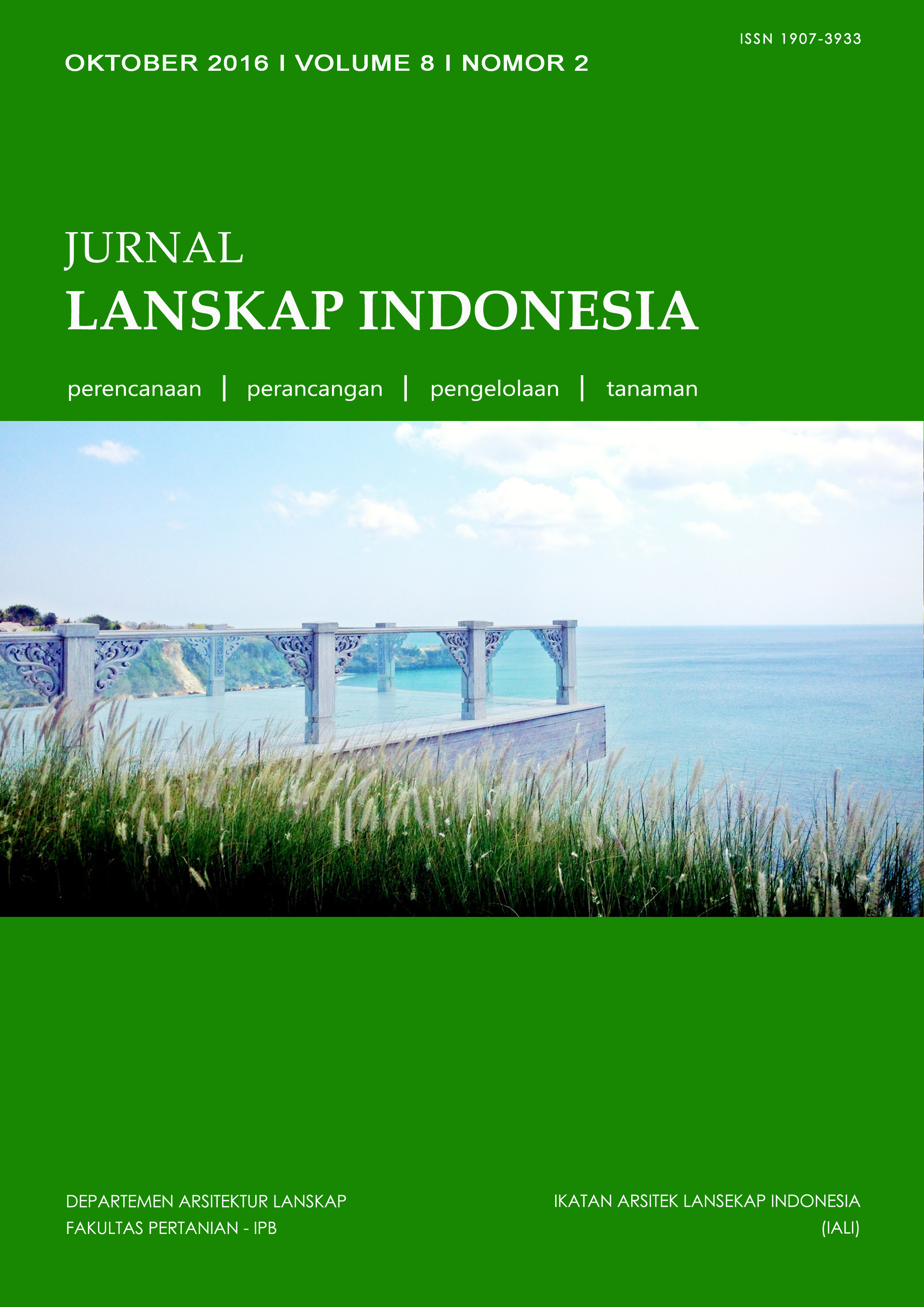EVALUASI KUALITAS VISUAL LANSKAP WISATA PANTAI BALEKAMBANG DI DESA SRIGONCO, KABUPATEN MALANG
Abstract
Balekambang beach area has the potential of natural resources and high visual landscape either natural and man made.These conditions make Balekambang beach area become one of the objects and attraction destinations in Malang district for the local and foreign tourists. Aesthetic landscape visual is one of the driving factors of the area to be visited to release stress from routine work. However, the current conditions of the landscape arrangement of Balekambang tourism beach are not yet appropriate, so that visual potential has not been optimally utilized. Based on these conditions evaluation efforts of landscape visual quality of Balekambang tourism beach needed to be done. The main purpose of this research was to evaluate the landscape quality visual of Balekambang tourism beach in Srigonco village, Malang district. While the specific purpose of this research was to determine and to assess the visual quality of Balekambang beach tourism area by estimating the beauty and defining the beauty zone of Balekambang beach tourism area based on the perception of respondents. This research used a survey method. The analysis method used Scenic Beauty Estimation (SBE) and Semantic Differential (SD). The results showed that generally the visual quality of Balekambang beach is categorized as medium beauty. The zone of the medium beauty quality area was 17.12 ha (56.84%) of the total area. The zone of high beauty quality area was 4 ha (13.16%). While the zone of low beauty quality area was 9 ha (30%).Downloads
This journal permits and encourages authors to post items submitted to the journal on personal websites or institutional repositories both prior to and after publication, while providing bibliographic details that credit, if applicable, its publication in this journal. However, after the article is submitted and published in this journal, it is fully copyrighted by the Jurnal Lanskap Indonesia or JLI. If excerpts from other copyrighted works are included, the author must obtain written permission from the copyright owner and give credit to the source in the article. Then, the writer or reader is allowed to copy, share, and redistribute articles/material in any form. But it must still include the appropriate source and credit because the article in this journal is licensed by Creative Commons Attribution 4.0 International License (CC BY 4.0).
I. Proposed Policy for Journals That Offer Open Access
Authors who publish with this journal agree to the following terms:
- Authors retain copyright and grant the journal right of first publication with the work simultaneously licensed under a Creative Commons Attribution License that allows others to share the work with an acknowledgement of the work's authorship and initial publication in this journal.
- Authors are able to enter into separate, additional contractual arrangements for the non-exclusive distribution of the journal's published version of the work (e.g., post it to an institutional repository or publish it in a book), with an acknowledgement of its initial publication in this journal.
- Authors are permitted and encouraged to post their work online (e.g., in institutional repositories or on their website) prior to and during the submission process, as it can lead to productive exchanges, as well as earlier and greater citation of published work (See The Effect of Open Access).
II. Proposed Policy for Journals That Offer Delayed Open Access
Authors who publish with this journal agree to the following terms:
- Authors retain copyright and grant the journal right of first publication, with the work after publication simultaneously licensed under a Creative Commons Attribution License that allows others to share the work with an acknowledgement of the work's authorship and initial publication in this journal.
- Authors are able to enter into separate, additional contractual arrangements for the non-exclusive distribution of the journal's published version of the work (e.g., post it to an institutional repository or publish it in a book), with an acknowledgement of its initial publication in this journal.
- Authors are permitted and encouraged to post their work online (e.g., in institutional repositories or on their website) prior to and during the submission process, as it can lead to productive exchanges, as well as earlier and greater citation of published work (See The Effect of Open Access).



























